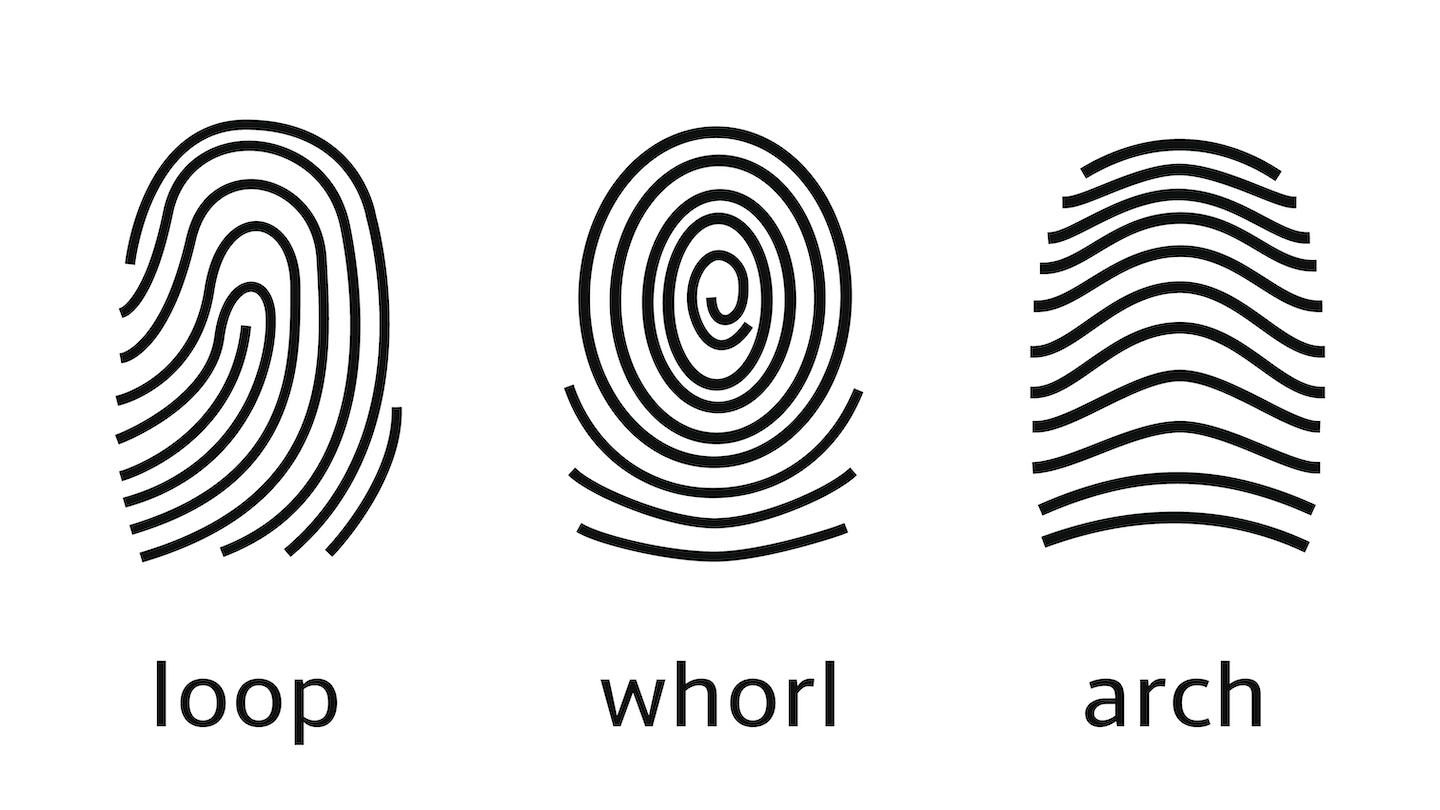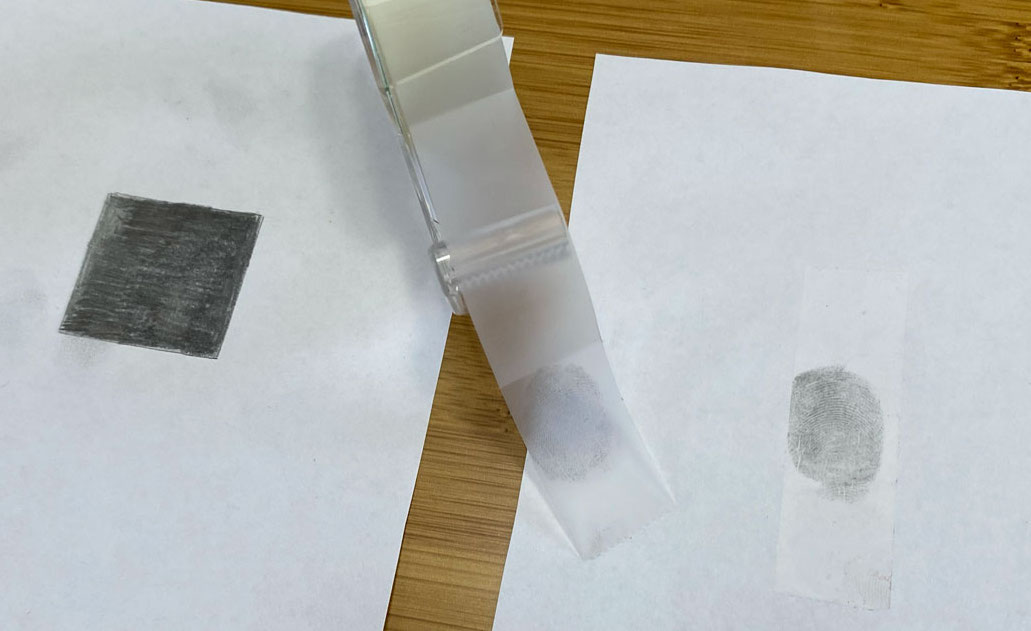Experiment: Are fingerprint patterns inherited?
Investigate whether fingerprint patterns are random or influenced by genetics

Fingerprints differ from person to person. This science activity can help you determine whether the patterns are random or inherited.
MirageC/Getty Images
Share this:
- Share via email (Opens in new window) Email
- Click to share on Facebook (Opens in new window) Facebook
- Click to share on X (Opens in new window) X
- Click to share on Pinterest (Opens in new window) Pinterest
- Click to share on Reddit (Opens in new window) Reddit
- Share to Google Classroom (Opens in new window) Google Classroom
- Click to print (Opens in new window) Print
Objective: Collect, categorize and compare the fingerprints of siblings versus unrelated pairs of individuals to determine if fingerprint patterns are inherited.
Areas of science: Genetics & Genomics
Difficulty: Hard intermediate
Time required: 2–5 days
Prerequisites:
- Basic understanding of genetic inheritance
- Consent forms must be signed for each person participating in this experiment. You should inform people that although fingerprints can be used as forms of identification, you will assign their fingerprints a code and not use their name so that the fingerprints remain anonymous. For children under the age of 18, parents must grant consent.
Material availability: Readily available
Cost: Very low (under $20)
Safety: No issues
Credits: Sandra Slutz, PhD, Science Buddies; edited by Sabine De Brabandere, PhD, Science Buddies
During weeks 10 through 24 of gestation (when a fetus is developing inside of its mother’s womb, also called in utero), ridges form on the epidermis, which is the outermost layer of skin, on the fingertips of the fetus. The pattern that these ridges make is known as a fingerprint and looks like the drawing shown in Figure 1 below.

Fingerprints are static and do not change with age, so an individual will have the same fingerprint from infancy to adulthood. The pattern changes size, but not shape, as the person grows. (To get a better idea of how that works, you can model the change in size by inking your fingerprint onto a balloon and then blowing up the balloon.) Since each person has unique fingerprints that do not change over time, they can be used for identification. For example, police use fingerprints to determine whether a particular individual has been at a crime scene. Although the exact number, shape and spacing of the ridges changes from person to person, fingerprints can be sorted into three general categories based on their pattern type: loop, arch and whorl, as shown in Figure 2, below.
The DNA that a person inherits from their parents determines many personal characteristics and traits, like whether someone is right- or left-handed or the color of their eyes. In this science project, you will examine fingerprints from siblings versus pairs of unrelated individuals to figure out if general fingerprint patterns are genetic or random. Have you ever looked at two girls and said, “You must be sisters”? We can often tell that two people are siblings because they appear to have several similar physical traits. This is because children receive half their DNA from each parent. All biological siblings are the mixture of both parents’ DNA. This results in a greater degree of matching traits between siblings than between unrelated individuals. Therefore, if DNA determines fingerprint patterns, then siblings are more likely to share the same fingerprint category than two unrelated individuals are.

Terms and concepts
- Gestation
- In utero
- Epidermis
- DNA
- Fingerprint patterns
- Biological siblings
- Fingerprint formation
- Inheritance
- Genetics
Questions
- What does it mean to be biologically related?
- What are fingerprints and how are they formed?
- What procedures do officials, like the police, use to record fingerprints?
- What are the different types or classes of fingerprints?
Materials and equipment
- Paper towel
- Moist towelettes for cleaning hands
- White printer paper, tracing paper or parchment paper
- Pencil
- Clear tape
- Scissors
- White paper
- Sibling pairs (at least 15)
- Unrelated pairs of people (at least 15)
- Optional: Magnifying glass
- Lab notebook
Experimental procedure
1. To start this science project, practice taking reliable, clear fingerprints. First try the technique on yourself, then ask a friend or family member to let you learn by using his or her fingerprints.
- To make an ink pad variation, rub a pencil on a piece of printer paper, parchment paper or tracing paper several times until an area of about 3 by 3 centimeters (1.2 by 1.2 inches) is completely grey, as shown in Figure 3 (the paper on the left).
- Use a moist towelette to clean the person’s right index finger.
- Thoroughly dry the finger with a paper towel.
- Press and slide each side of the right index fingertip one time over the pad.
- Then roll the grey fingertip onto the sticky side of a piece of clear tape. The result will look like the tape in Figure 3.
- Use another towelette to clean the person’s grey finger.
- Cut off the piece of tape containing the fingerprint and stick it onto a piece of white paper, as shown in Figure 3.
- Perfect your technique until the fingerprints come out clear each time.
- When your prints start to fade, rub your pencil a couple of times over your pad and try again.

2. Make up a consent form for your science project. Because fingerprints can be used to identify people, you will need their consent to take and use their fingerprints. The Science Buddies resource on Projects Involving Human Subjects will give you some additional information on getting consent.
3. Collect fingerprints of pairs of siblings and of pairs of unrelated people.
- Make sure they sign a consent form before you take the fingerprint.
- Use the cleaning and printing system you developed in step 1 to take one fingerprint of each person’s right index finger.
- Label each fingerprint with a unique code, which will tell you which pair the fingerprint belongs to and whether that is a sibling pair or an unrelated pair. An example of an appropriate code would be to assign each pair a number and each individual a letter. Siblings would be labeled as subjects A and B, while unrelated individuals would be labeled as subjects D and Z. Thus, fingerprints from a sibling pair might carry the codes 10A and 10B while fingerprints from an unrelated pair might be labeled 11D and 11Z.
- Collect fingerprints from at least 15 sibling pairs and 15 unrelated pairs. For unrelated pairs, you can actually reuse your sibling data by pairing them up differently. As an example, you could pair sibling 1A with sibling 2B since these individuals are not related to each other. The more pairs you look at in your science project, the stronger your conclusions will be! For a more in-depth look at how the number of participants affects the reliability of your conclusions, see the Science Buddies resource Sample Size: How Many Survey Participants Do I Need?
4. Examine each fingerprint and characterize it as a whorl, arch or loop pattern. You can use a magnifying glass if you have one. In your lab notebook, make a data table like Table 1, creating a separate row for each person, and fill it out.
Table 1
| Related Pairs (unique ID) | Fingerprint Category (arch/whorl/loop) | Category match? (yes/no) |
| 10A | ||
| 10B |
| Unrelated Pairs (unique ID) | Fingerprint Category (arch/whorl/loop) | Category match? (yes/no) |
| 11D | ||
| 11Z |
In your lab notebook, make a data table like this one and fill it out using the fingerprint pattern data you collected. Be sure to make a separate row for each person.
5. To analyze your data, calculate the percentage of related pairs whose fingerprint patterns match and the percentage of unrelated pairs whose fingerprint patterns match. Advanced students can calculate the margin of error. The Science Buddies resource Sample Size: How Many Survey Participants Do I Need? can help you with this.
6. Make a visual representation of your data. A pie chart or bar graph will work well for this data. Advanced students can indicate the margin of error on their graph.
7. Compare the percentage of related pairs whose fingerprint patterns match to the percentage of unrelated pairs whose fingerprint patterns match.
- Are they the same? Is the difference significant taking the margin of error into account? Which one is higher?
- What does this tell you about whether fingerprint patterns are genetic?
- Identical twins share (nearly) 100 percent of their DNA. Does your data include any identical twins? Do they have the same fingerprint pattern?
Variations
- How do your results change if you compare all 10 fingers rather than just one? Do all 10 fingers from the same person have the same fingerprint?
- Toes also have ridge patterns. Do “toe prints” follow the same rules as fingerprints?
- Are some patterns more common than others?
- If you make more quantitative measurements of the fingerprint patterns, can they be used to predict sibling pairs? With what degree of accuracy?
- If fingerprints are unique, why do misidentifications occur in forensics? How easy or hard is it to match a fingerprint with an individual?
- Read about statistics and use a mathematical test (like Fisher’s exact test) to determine if your findings are statistically relevant. To do this, you will need to make sure you understand p values and you will need to think about whether your sample size is large enough. Online calculators, like the one from GraphPad Software, are good resources for this analysis.
This activity is brought to you in partnership with Science Buddies. Find the original activity on the Science Buddies website.








